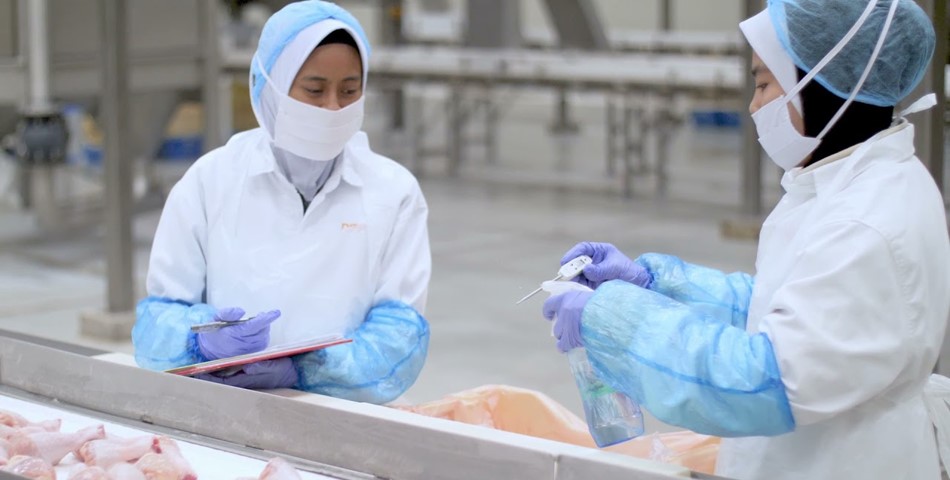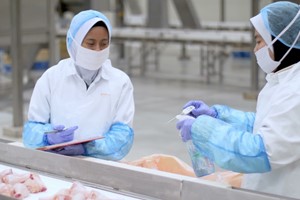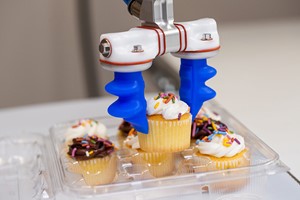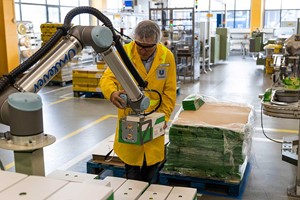Global Poultry Processing Equipment Market to Reach $4.5 Billion by 2026
Poultry is processed into various products through processes such as battering and breading, tumbling, and massaging, smoking, deboning and grinding. Industry 4.0 has motivated all players to embrace a paradigm technological shift and poultry farming is no exception. This industry is reaching towards a digitized regime where poultry processing tools will be fitted with automation. Poultry farming players are gradually accepting the potential of process efficiency through technology adoption. Technological progression in fresh meat and poultry processing tools exerts a considerable influence on market growth. Amid the COVID-19 crisis, the global market for Poultry Processing Equipment estimated at US$3.8 Billion in the year 2022, is projected to reach a revised size of US$4.5 Billion by 2026, growing at a CAGR of 4.2% over the analysis period. Chicken Processing Equipment, one of the segments analyzed in the report, is projected to record 4.5% CAGR and reach US$2.8 Billion by the end of the analysis period. After a thorough analysis of the business implications of the pandemic and its induced economic crisis, growth in the Killing & Defeathering Equipment segment is readjusted to a revised 5.1% CAGR for the next 7-year period.
The U.S. Market is Estimated at $1.2 Billion in 2022, While China is Forecast to Reach $523.1 Million by 2026
The Poultry Processing Equipment market in the U.S. is estimated at US$1.2 Billion in the year 2022. China, the world`s second largest economy, is forecast to reach a projected market size of US$523.1 Million by the year 2026 trailing a CAGR of 6% over the analysis period. Among the other noteworthy geographic markets are Japan and Canada, each forecast to grow at 3.4% and 4% respectively over the analysis period. Within Europe, Germany is forecast to grow at approximately 3.4% CAGR. These regional markets are witnessing strong demand for different variants of poultry meats including freshly processed, cured, pre-cooked, and raw/cooked and sausages. The scenario is driving demand for specialized meat processing equipment. Most of these tools help in speedy killing and de-feathering apart from de boning, skinning, and marinating. Poultry processing machine help in saving time and labor and minimizes human interaction with products thus leading to maintenance of better hygiene standards. Against the backdrop of continuously rising demand for poultry and meat products, manufacturers are investing in research and development for optimizing the nutrition value of products.
Deboning & Skinning Equipment to Reach $952.3 Million by 2026
Meat-bone separators and mechanical debones are used to crush the meat and bones. The screen in the equipment filters the smooth portions of the meat and bone combination as the crushing process progresses. Global market for Deboning & Skinning (Equipment) segment is estimated at US$798.1 Million in 2022 and is projected to reach US$952.3 Million by 2026 reflecting a compounded annual growth rate of 4.2% over the analysis period. United States constitutes the largest regional market for Deboning & Skinning segment, accounting for 35.0% of the global sales. China is poised to register the fastest compounded annual growth rate of 5.8% over the analysis period, to reach US$97.1 Million by the close of the analysis period.
The poultry processing equipment market was dominated by Asia-Pacific in 2017. The Asia-Pacific region is projected to be the fastest-growing market from 2018 to 2023, Economic growth and the shift of preferences of consumers towards value added food led to the market growth. In the Asian-Pacific region, countries such as China, Japan, India, Thailand, and Vietnam have shown increment in the consumption rate of meat due to the increased demand for animal protein.
The COVID-19 pandemic has had a significant impact on the food processing machinery market causing production and factory operations to be halted. It all started in China, which is the worldwide hub for the supply of raw materials to industries. Over 75 percent of the world’s total enterprises are expected to be in direct or indirect interaction with Chinese corporations for raw materials, and nearly 950 Fortune 1000 organizations have tier 2 suppliers in China. Furthermore, the United Nations Conference on Trade and Development (UNCTAD) predicts that worldwide FDI will fall by 5% to 15% because of a drop in manufacturing company activities owing to plant shutdown.
The food processing machinery market analysis is segmented on the basis of type, application, mode of operation, and region. On the basis of type, it is classified into depositors, extruding machines, mixers, refrigeration, slicers & dicers, and others (cutting machines, dispensing machines, and ovens). By application, it is categorized into bakery & confectionery, meat, poultry & seafood, dairy, beverages, and others (grain, fruit, and nut & vegetable). On the basis of mode of operation, it is bifurcated into semi-automatic and fully automatic. By region, it is analyzed across North America, Europe, Asia-Pacific, and LAMEA.
The food processing machinery market forecast on the basis of type is divided into depositors, extruding machines, mixers, refrigeration, slicers & dicers, and others (cutting machines, dispensing machines, and ovens. Depositing machines increase efficiency and reduce operational expenses in a food manufacturing plant by allowing continuous processing and more precise product packaging. Such benefits contributed this segment to be the largest segment during the forecast period.
On the basis of application, the food processing machinery market is divided into bakery & confectionery, meat, poultry & seafood, dairy, beverages, and others (grain, fruit, and nut & vegetable). Meat, poultry, and marine items are predicted to expand most rapidly during the forecast period. People’s changing lifestyles, increased preference for nutritious food, and raised understanding of the health advantages of marine goods have fostered demand for meat, poultry, and seafood items.











